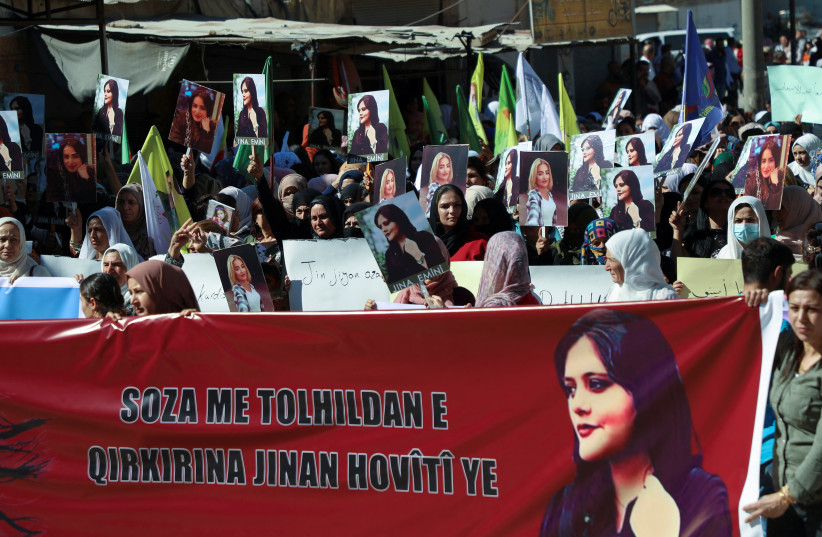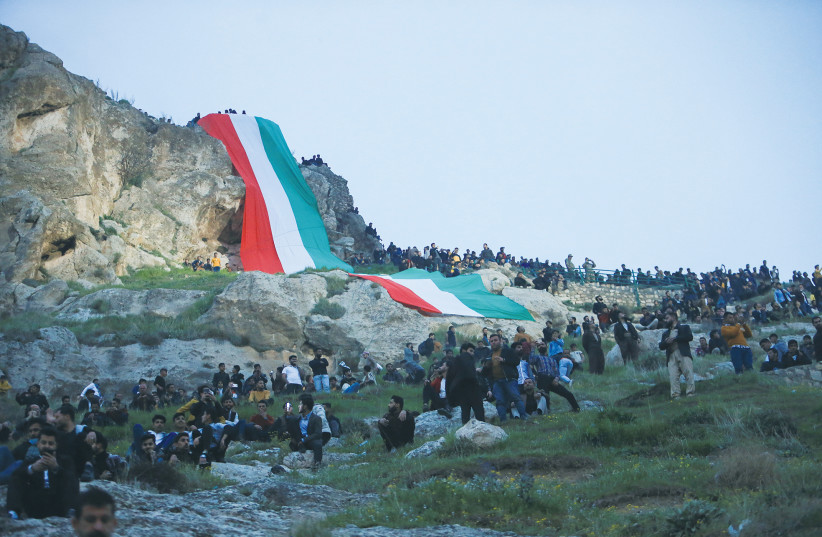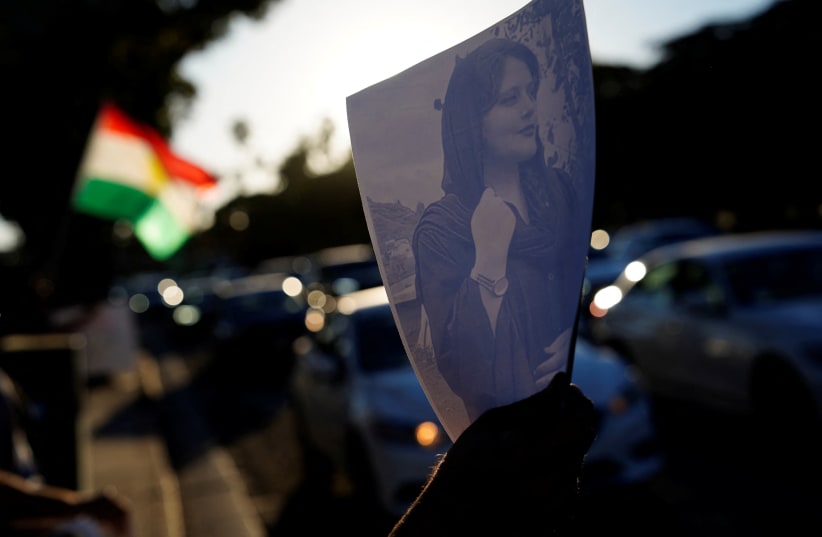The Iranian regime, knowing it can’t attack Western powers who have expressed support for recent protests across the Islamic Republic, has decided to attack Iran's Kurdish minority in response.
Iran’s decision to target Kurds is not a surprise. It is trying to distract from the murder of Mahsa Amini, the woman whose death at the hands of Iran’s police led to the protests. Amini was a Kurd from western Iran.
Iran’s regime knows that murdering a woman, particularly a woman from a minority group, will lead to anger. This is why Iran’s regime initially tried to downplay the killing, excuse it and even pretend to investigate it. This is because Iran is aware that when a regime targets a woman and murders her that this is a red line for many people in Iran, especially in the Kurdistan region.
Protests began in the Kurdish region. The slogan “woman, life, freedom” has become a rallying cry of the protests in Iran and many have pointed out that this slogan comes from the Kurdish region and has now been taken up more broadly.
The slogan “woman, life, freedom” is one that many media outlets have not noticed. Iran has now decided to target Kurdish groups across the border in Iraq as the protests spread in Iran.


Why is Iran doing this?
The regime has tried to blame the West for stoking the protests, but the regime can’t attack the West. In addition, the regime is pushing talk of a new Iran deal, and thus can’t attack the West when it wants sanctions relief.
The Iranian regime is cracking down on the Kurdistan region in Iran. However, it fears that if it cracks down too harshly that it could provoke a more widespread rebellion.
Iran’s regime knows it is hated by groups across Iran, from minority Kurdish, Azeri, Baloch and other groups, to Farsi speakers in Tehran. It can’t fight all the opposition at once. The regime survives by fighting one group at a time. That is how the center survives while keeping the periphery on edge. This is why Iran has been bombarding the Kurdistan autonomous region in Iraq.
Rudaw in northern Iraq notes that IRGC-affiliated media Fars News "defined the attacks on the Kurdistan Democratic Party of Iran (KDPI) and Komala, both Kurdish-Iranian opposition groups with bases in the Kurdistan region, as a response to the evil support of the anti-revolutionary elements for the disturbances and actions of thugs and with the aim of punishing and extorting these groups."
The mayor of an area called Sidakan said that the shelling has now taken place for three days. This is illegal shelling by Iran attacking what it claims are Kurdish groups across the border. The New York Times termed these groups “separatists” in an article, but the groups are opposition groups that have long struggled for Kurdish rights in Iran.
Iran’s Tasnim upped the rhetoric against Kurdish dissident and opposition groups this week, claiming that “the ground forces of the Islamic Revolutionary Guard Corps have started their new round of operations against the positions of terrorist groups in the Kurdistan region of Iraq this [Monday] morning.”
Iran claims that it has used artillery and drones to carry out the attacks. It claims to have struck the “assembly headquarters and training and operational centers of the terrorist groups based in the Kurdistan region of Iraq, using smart and pinpoint weapons.” Iran admitting it used drones is interesting. Iran is increasingly using drones in its operations and exporting drones to Russia.
Iran’s media also says it has struck Komala and the KDPI group.
Kurdish Iranian opposition groups seek reunification
The KDPI announced in August that it had reunified with another of its constituent parts, the KDP-I. To non-experts, this seems a bit confusing that the KDPI and KDP-I would reunite, but the groups have a common origin and had split apart at some point around 16 years ago. Both are opposition groups rooted in the Kurdish minority of Iran. They tend to have offices and bases in northern Iraq where Kurds from Iran flee persecution.'


Iran has targeted these groups numerous times in the past, even threatening invasions of Iraq. Iran’s regime has always been afraid of Kurdish groups and has sought to eliminate them over the years. In 1989, Iran’s regime sent agents to Europe to murder the Kurdish leader Abdulrahman Ghassemlou. Iran’s regime has increased its attacks on opposition groups in Europe in the last several years, targeting Arab and other opposition groups in Europe. Iran has also kidnapped a journalist and claims from time to time to break up various “terrorist” networks. Iran also accuses the Kurdistan region of Iraq of hosting Israeli “spies.” In March, Iran claimed to target “Mossad” in northern Iraq. Iran used missiles in March and a drone in June to carry out attacks in northern Iraq.
In 2018, Iran used Fateh 110 missiles to target Kurdish dissidents in Iraq, seeking to wipe out the leadership of KDP-I. It used drones to conduct surveillance at the time. In June, Iran International noted that “Shoresh Haji, a member of the governing committee of the opposition group – known as Khabat that is the Kurdish word for ‘struggle’--- told Iran International on Tuesday that the former political prisoner, 49, was injured when a bomb that was attached to his car detonated in Erbil, the capital of the Kurdistan Region in Iraq.”
Over the last several years that have been attempts by Kurdish opposition groups to increase operations in Iran. This has included efforts by KDPI, as well as the Kurdistan Free Life Party (PJAK) and also Komala.
In August, a report noted that “a group of four members of the Komala party of Iranian Kurdistan who were sent to Orumiyeh, West Azerbaijan province, to carry out an organizational mission was arrested by the forces of the intelligence ministry and Hamzeh Seyyed al-Shohada unit.”
It should be noted Iran’s Tasnim also names the Hamzeh Seyyed al-Shohada command center of the IRGC as being linked to the attacks in Iraq. In September 2021, Iran claimed that this unit used artillery to target northern Iraq from Iran’s West Azerbaijan province. Iran also said in May that this IRGC unit had tracked down “terrorists” trying to infiltrate Iran. In August 2019, a member of KDP-I allegedly killed a member of the Iranian IRGC, according to a report at Rudaw and a report by Iran’s regime media.
This is the shadow war that has taken place in Iran’s Kurdistan region and across the border. Iran’s decision to target the Kurdish groups is clearly linked to the protests.
